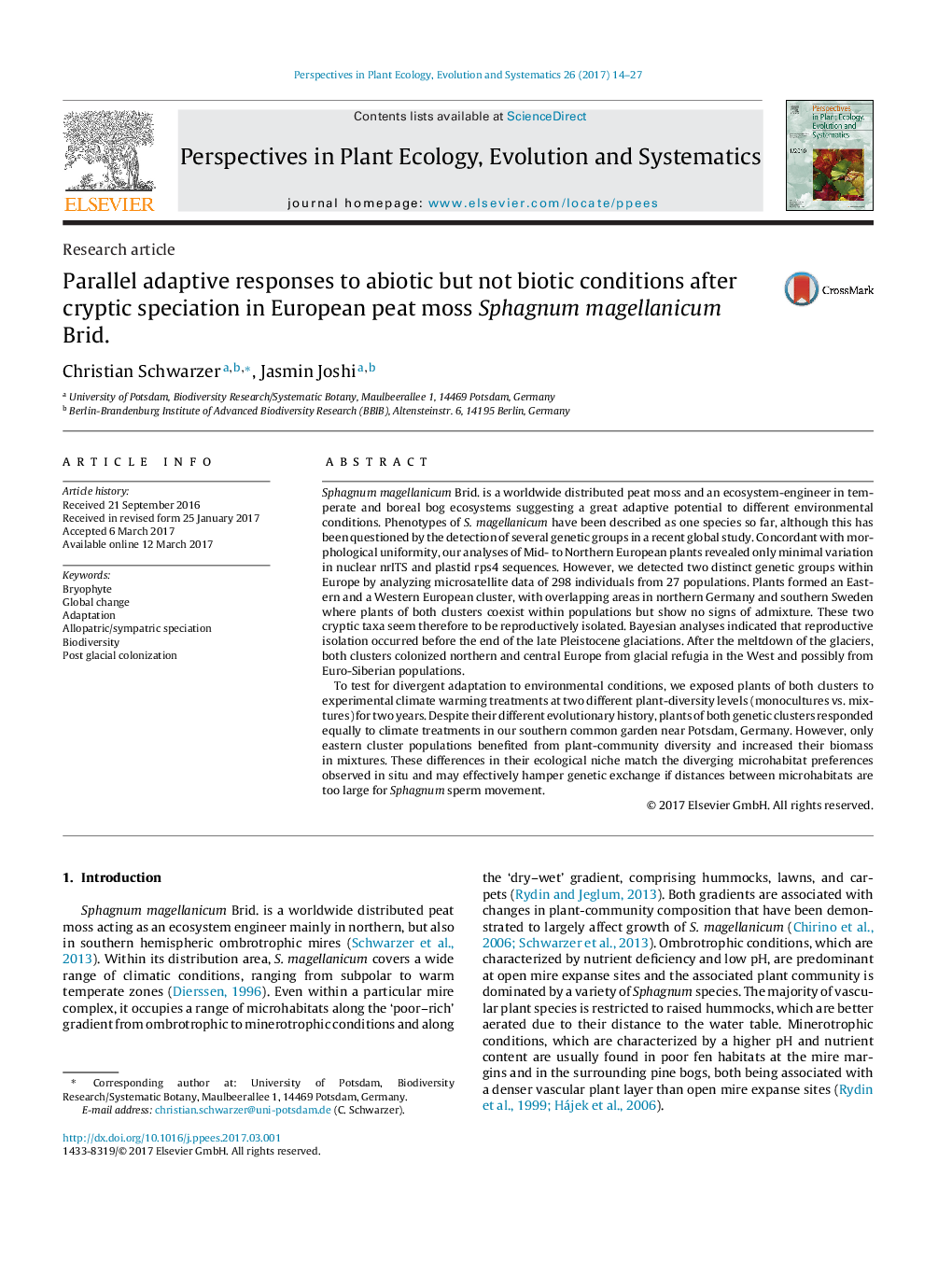| کد مقاله | کد نشریه | سال انتشار | مقاله انگلیسی | نسخه تمام متن |
|---|---|---|---|---|
| 5744948 | 1618594 | 2017 | 14 صفحه PDF | دانلود رایگان |

- Two distinctly distributed cryptic taxa form European peat moss Sphagnum magellanicum.
- Reproductive isolation between groups is sustained even in sympatric occurrences.
- Both groups responded similarly to experimentally induced climate change conditions.
- Yet, a differential effect of a diverse bog plant community on biomass was observed.
- Diverging microhabitat preferences may represent a barrier for sexual recombination.
Sphagnum magellanicum Brid. is a worldwide distributed peat moss and an ecosystem-engineer in temperate and boreal bog ecosystems suggesting a great adaptive potential to different environmental conditions. Phenotypes of S. magellanicum have been described as one species so far, although this has been questioned by the detection of several genetic groups in a recent global study. Concordant with morphological uniformity, our analyses of Mid- to Northern European plants revealed only minimal variation in nuclear nrITS and plastid rps4 sequences. However, we detected two distinct genetic groups within Europe by analyzing microsatellite data of 298 individuals from 27 populations. Plants formed an Eastern and a Western European cluster, with overlapping areas in northern Germany and southern Sweden where plants of both clusters coexist within populations but show no signs of admixture. These two cryptic taxa seem therefore to be reproductively isolated. Bayesian analyses indicated that reproductive isolation occurred before the end of the late Pleistocene glaciations. After the meltdown of the glaciers, both clusters colonized northern and central Europe from glacial refugia in the West and possibly from Euro-Siberian populations.To test for divergent adaptation to environmental conditions, we exposed plants of both clusters to experimental climate warming treatments at two different plant-diversity levels (monocultures vs. mixtures) for two years. Despite their different evolutionary history, plants of both genetic clusters responded equally to climate treatments in our southern common garden near Potsdam, Germany. However, only eastern cluster populations benefited from plant-community diversity and increased their biomass in mixtures. These differences in their ecological niche match the diverging microhabitat preferences observed in situ and may effectively hamper genetic exchange if distances between microhabitats are too large for Sphagnum sperm movement.
Journal: Perspectives in Plant Ecology, Evolution and Systematics - Volume 26, June 2017, Pages 14-27